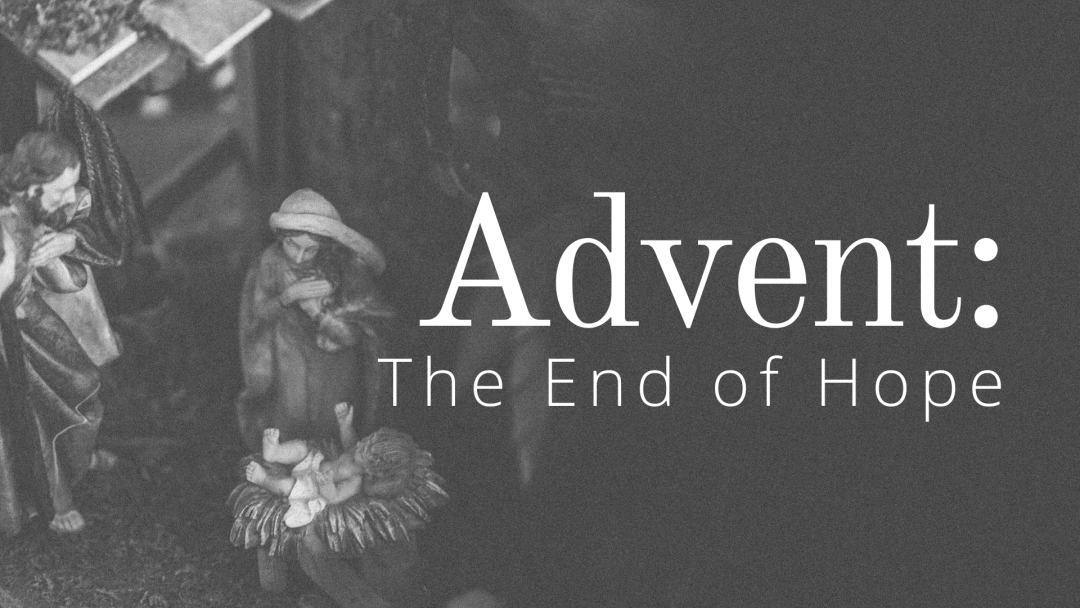
“Hope is a funny thing, it is a currency for those who are losing.”
So narrates, Frankie, the central character in the Scottish drama, “16 Years of Alcohol.” What follows is a film that chronicles his battles with addiction, his violent criminal activity, and multiple hopeful moments that collapse in on themselves leaving him trapped in the same cycle of substance and violence. It’s been almost a decade since I saw the movie, and most of the finer points of the plot are a blur to me. Somehow though, that line still rings clear as day. Maybe it’s had that sort of staying power in my life because it’s proven to be true. It’s something that feels more tangible with each passing year: hope is only necessary in a world gone desperately wrong. It is the sort of thing that we need when life is not the way that it’s supposed to be. In human history, there are but two times in which there was no hope. The first of these is before sin entered the world. Eden was a hopeless world, but that is not to say that it was anything less than good. Eden was hopeless because there was no need for hope, Adam and Eve enjoyed face to face fellowship with God. In a world that is, “very good” an idea like hope is a concept without significance, it’s the equivalent of describing ideas like, “wet” or “dry” to a fish.
Yet, this is not how the world remained. As sin splintered creation, the lack of hope became acute. As the engine of the cosmos began to misfire, as eyes opened, as shame enterered the world, hope becomes a necessity. Yet from Genesis 3:7-15 it is nowhere to be found, only fear and trembling and the haunting question from God, “What is this that you have done?” For 8 verses, the world stands without any promise that all of the destruction that Adam and Eve have brought about will ever be mended.
Yet, this is not how the world remained. No sooner was hope needed than God spoke it into being. With the promise of one who would crush the head of the serpent, the thrill of hope entered into the fallen creation where it has existed ever since. It is this thread of promise that we find Simeon desperately clinging to in Luke 2. He had waited, as all people in the shadow of Eden had waited, but Simeon was particularly desperate to see the Messiah with his own eyes. At last, with the arrival of a young couple and their newborn son, Simeon reached the end of hope. His faith in God’s promises gave way to sight as he held in his arms the one who had been spoken of by the prophets for generations.
At this point, I’m sure you’re aware that we are merely days away from Christmas. In some small way, the journey from Advent to Christmas gives us the chance to enter into Simeon’s experience. By Wednesday, 4 weeks of Advent waiting will have given way to Christmas fulfillment. Yet, Christian hope will not yet have reached its end. We still await the day when our eyes will see the Lord’s salvation. The baby that Simeon once held in his arms is a child no longer. He has grown in wisdom and become strong. He has been pierced for our transgression and crushed for our iniquities. In his strength he has borne the awful weight of our sins. Mary’s son has triumphed over the grave. The child that Simeon once saw at the temple will come again to judge the living and the dead, and his kingdom will have no end. One day, when he tears open the heavens, we, like Simeon, will reach the end of our hope. But unlike Simeon, it will not be we who hold him, but he who holds us: as he wipes every tear from our eyes.
For now, we wait, and like Simeon, we long for the day when our hope will reach its end, and our faith will give way to sight. At that point, we will reach the third moment in history without hope, and never again will we require it. At long last, the word that became flesh to dwell among us will dwell among us once more, and all will be made new.
